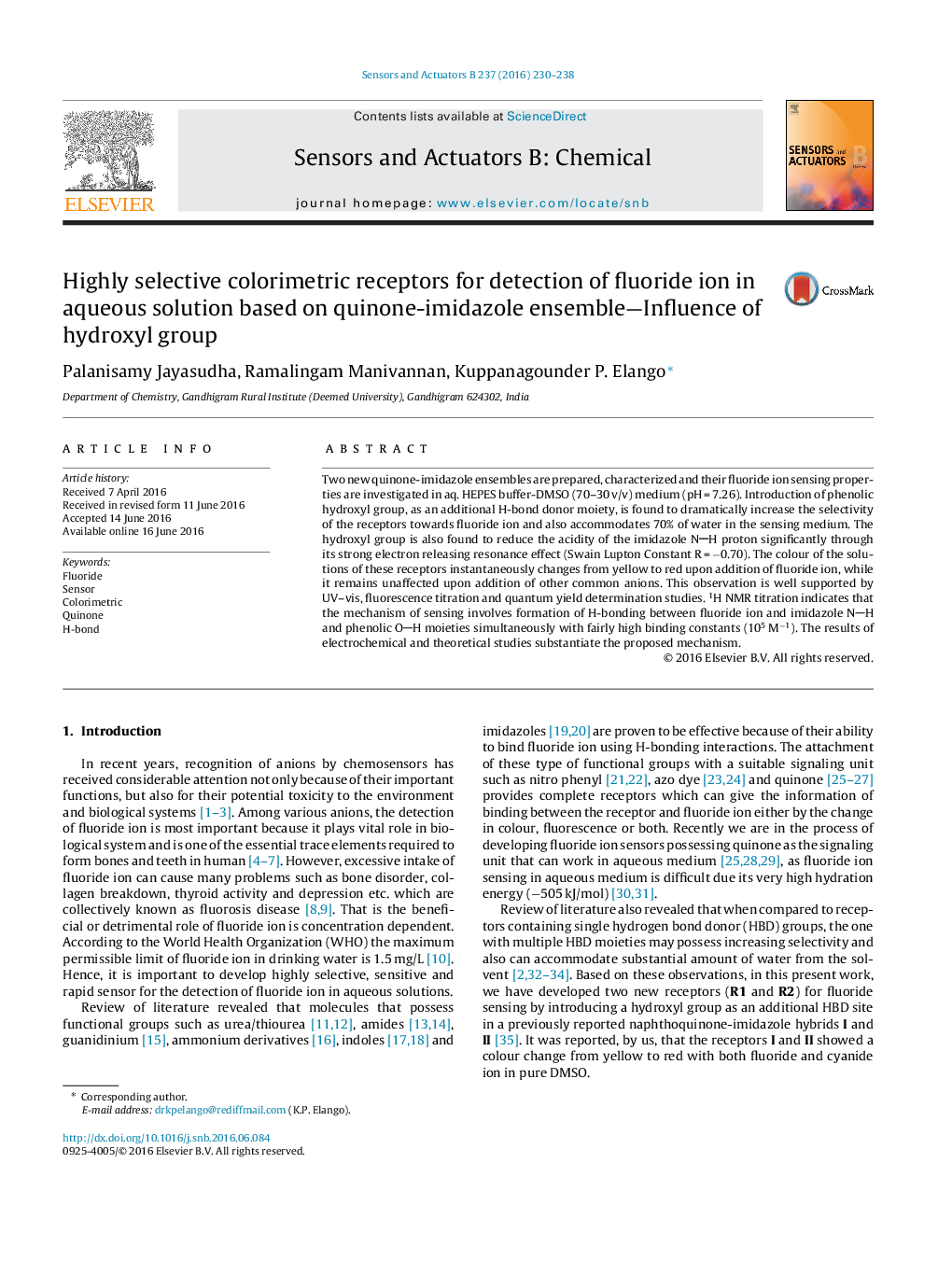| کد مقاله | کد نشریه | سال انتشار | مقاله انگلیسی | نسخه تمام متن |
|---|---|---|---|---|
| 742251 | 1462054 | 2016 | 9 صفحه PDF | دانلود رایگان |
• Two receptors for selective sensing of fluoride ion in aq. solution are designed and described.
• The mechanism of sensing involves H-boding with both NH and OH moieties.
• Introduction of hydroxyl group dramatically increased the selectivity.
Two new quinone-imidazole ensembles are prepared, characterized and their fluoride ion sensing properties are investigated in aq. HEPES buffer-DMSO (70–30 v/v) medium (pH = 7.26). Introduction of phenolic hydroxyl group, as an additional H-bond donor moiety, is found to dramatically increase the selectivity of the receptors towards fluoride ion and also accommodates 70% of water in the sensing medium. The hydroxyl group is also found to reduce the acidity of the imidazole NH proton significantly through its strong electron releasing resonance effect (Swain Lupton Constant R = −0.70). The colour of the solutions of these receptors instantaneously changes from yellow to red upon addition of fluoride ion, while it remains unaffected upon addition of other common anions. This observation is well supported by UV–vis, fluorescence titration and quantum yield determination studies. 1H NMR titration indicates that the mechanism of sensing involves formation of H-bonding between fluoride ion and imidazole NH and phenolic OH moieties simultaneously with fairly high binding constants (105 M−1). The results of electrochemical and theoretical studies substantiate the proposed mechanism.
Figure optionsDownload as PowerPoint slide
Journal: Sensors and Actuators B: Chemical - Volume 237, December 2016, Pages 230–238
